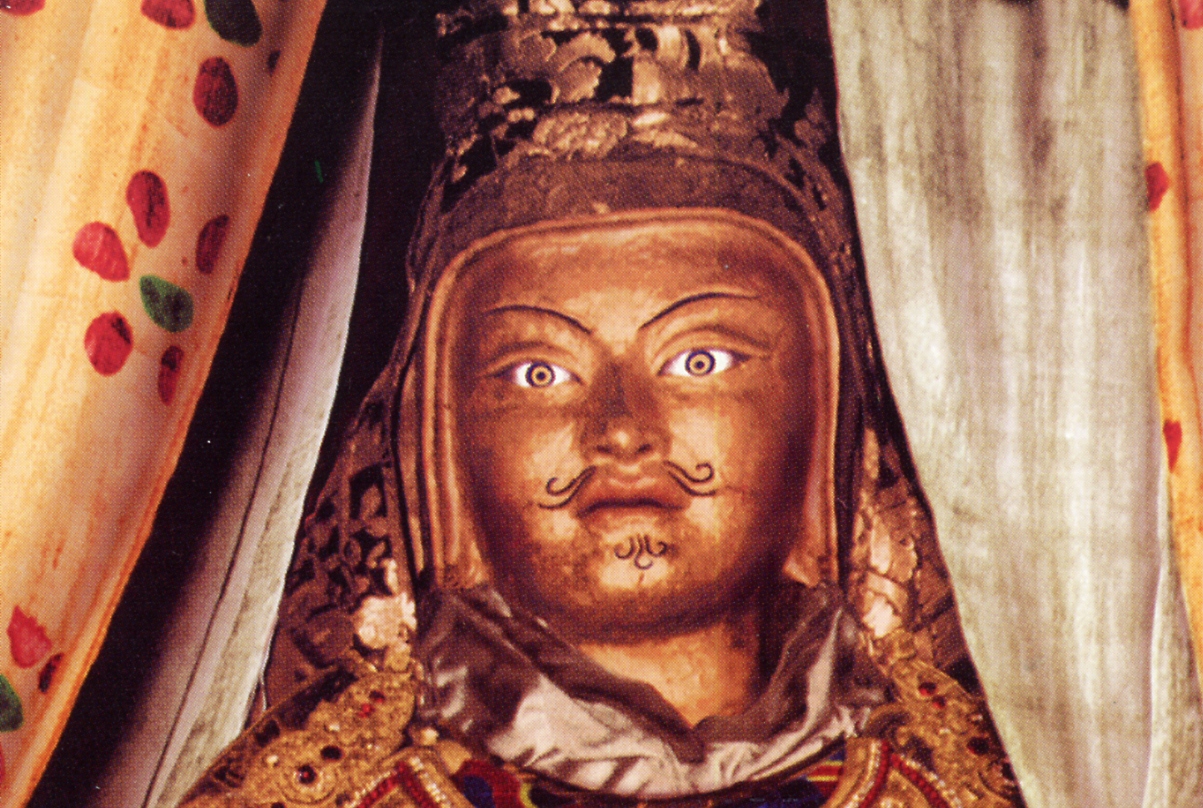
蓮師「誦解脫」祈請文
蓮花生大士(蓮師)為古印度烏仗那(鄔金)國人,於蓮花化生,將佛教密法傳入西藏且因而聞名。蓮師的外相富含甚深寓意,若以寬廣心觀之,可再次證實我們本來的清淨與平等自性:在本質上,眾生皆平等且圓滿。
看著真實的蓮師塑像或畫像,凝視其開廣覺醒的雙眼,有時據說能讓人瞥見自心神聖無執的覺醒狀態。而其右手所持的金剛杵,則表示見到能知自性本貌時所伴隨的無可動搖之威嚴。
持誦蓮師的神聖祈請文時,首先需以內在臣服的優雅禮敬,讓二元心趨向覺醒的狀態,打從心底、足底來唱。接著藉由獲得啟發而讓心打開,彷彿從內在褪去遮障,使得智識更為敏銳、慈悲更為深切。這就是對蓮師的體驗。如此一來,持誦便成為以唱誦獲致覺醒的一種工具。
~以下〈蓮師七句祈請文〉,唱誦者為著名的瓊英卓瑪Ani Choying Drolma,其為祖古烏金仁波切納吉貢巴Nagi Gompa尼院的尼師。
PADMASAMBHAVA’S LIBERATING CHANT
In MANTRA SONGS by Erik Pema Kunsang06/26/20153 Comments
http://levekunst.com/padmasambhavas-liberating-chant/
Padmasambhava, the Lotus Born Master from the ancient Indian country of Uddiyana, is renowned to have brought the Buddhist tantras to Tibet. Padmasambhava’s depicted form is loaded with deep symbolism and seeing the form with open mind can reconfirm our basic nature of purity and equality: that we are in essence all equal and perfect.
Sometimes it is said that looking into his wide-awake eyes on a authentic statue or painting can give a glimpse of the sublimely unattached awaken state of mind. It is also said that the vajra scepter in his right hand is a gesture of the unshakeable dignity that accompanies seeing the unformed nature of knowing, face to face.
When chanting Padmasambhava’s sacred invocation, it is said that at first dualistic mind needs to approach the awakened state with the graceful bow of inner surrender, singing from the core of ones heart and the sole of ones feet. Then comes the phase of inspiration, mind and heart opening up, as if taking off a veil from inside. Intelligence is sharper, compassion deeper. That is the feel of Padmasambhava. In this way the chant is a tool for awakening through song.
~普賢法譯小組Sandy, Misty, Susane翻譯校對,Serena完稿於2017.06.05,願眾生於此薩嘎達瓦中善德無量增長!


 留言列表
留言列表
